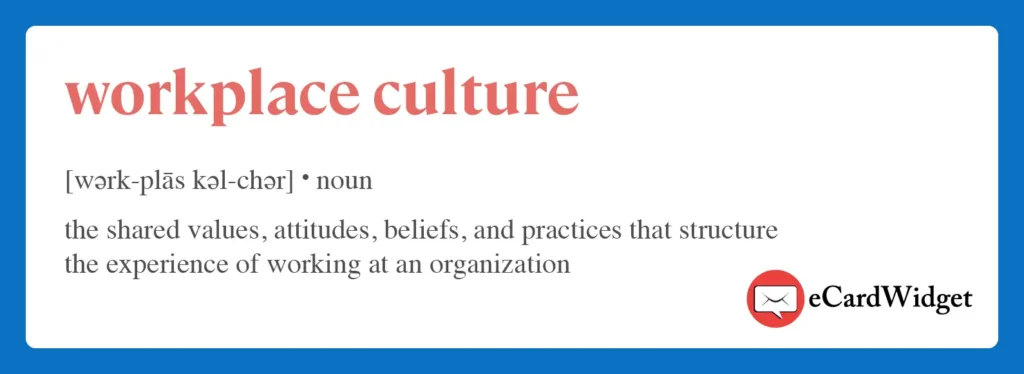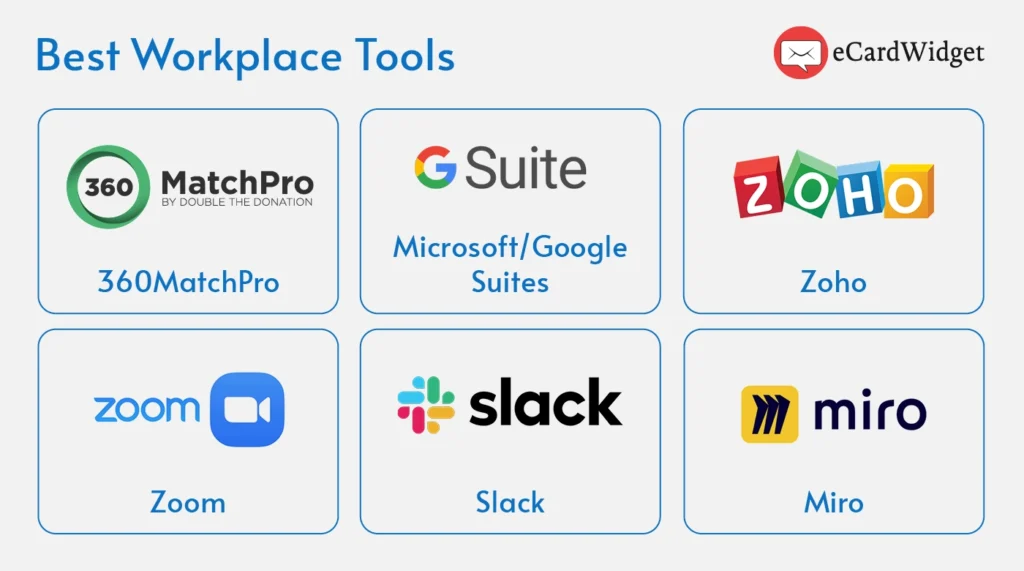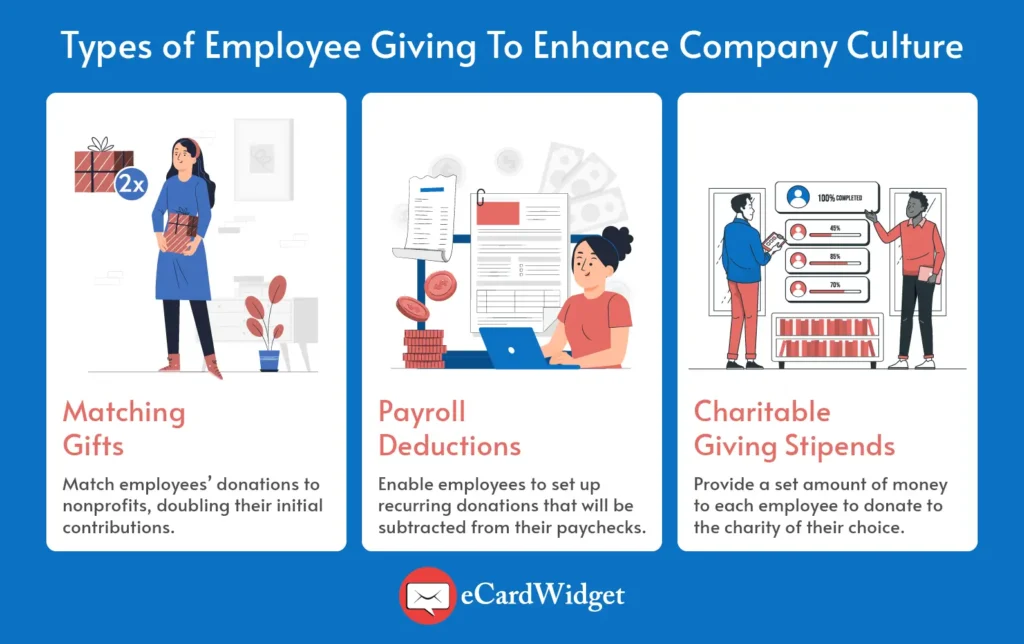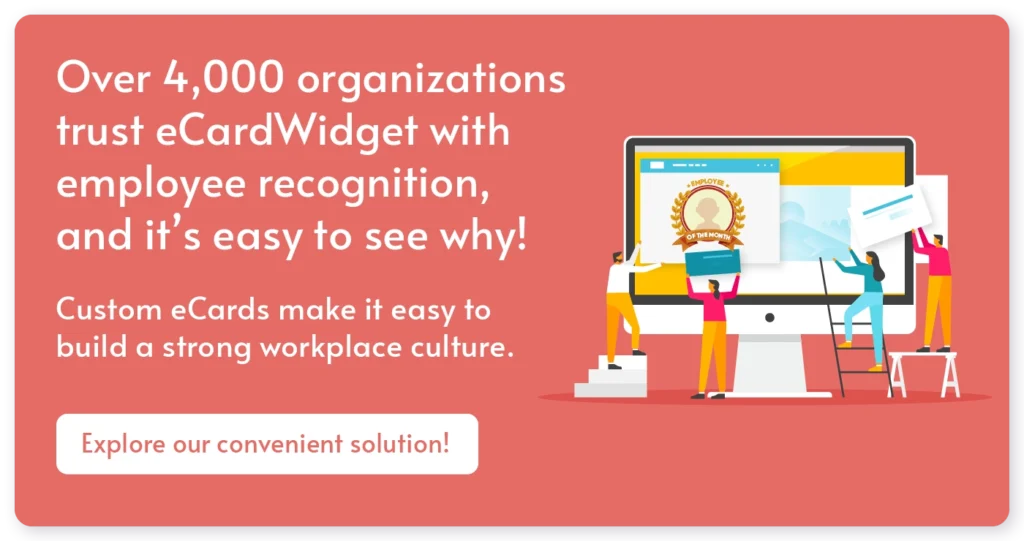94% of executives and 88% of employees believe workplace culture is important to business success. And, since millions of workers worldwide have swapped their metro passes for monitors, the recent switch to working from home makes workplace culture even more complex.
To build a thriving workplace, whether in person or online, that exemplifies your organization’s culture, you’ll need a strategy for creating a positive work atmosphere. In this guide, we’ll explore the ins and outs of workplace culture, including:
- What is Workplace Culture?
- Why is Workplace Culture Important?
- How to Assess Your Company’s Current Culture
- How to Cultivate Your Workplace Culture
Ready to step into the future of employment? Let’s dive in!

What is Workplace Culture?
Workplace culture is the combination of shared values, attitudes, beliefs, and practices that structure the experience of working at your organization. You can promote a shared understanding of your workplace culture by hosting regular, organization-wide meetings, encouraging cross-departmental communication, and offering more shared spaces to set the tone.

Why is Workplace Culture Important?
Beyond ensuring the general well-being of your employees, a healthy workplace culture is an important part of recruiting new employees, increasing productivity, and retaining staff over time. As a result, a positive work environment encourages effective teamwork, high-quality work, and an overall enhanced reputation for your organization.
Having a strong workplace culture is particularly significant in a remote environment because it helps your team become a community that upholds your organization’s values, even when everyone’s physically distanced.
While working remotely, your team members won’t see each other as often as they might in the office and thus might feel disconnected from your workplace culture. However, your leadership team can combat this and foster a close-knit team experience with remote work culture programs.
How to Assess Your Company’s Current Culture
Use the following steps to get a baseline for your company’s current workplace culture.
Determine What Defines Your Culture
The first step in assessment is knowing where to look. Company culture starts with the tone set by your organization’s leadership team and is shaped by management as they carry out the company’s policies and procedures. Other factors that contribute to your company’s culture include:
- The workplace environment, such as a physical office space or provisions for a work-from-home setup.
- External activities, like team-wide dinners after work hours.
- Availability of support, cultivated by the sense of acceptance and collaboration as team members work together on different projects.
Once you’ve identified the factors that influence your workplace, you’re ready to determine the current culture of your work environment.
Evaluate Current Culture
Measure the state of your company’s culture by using data and employee feedback to gather insights. Consider the following tests to evaluate your company:
- Conduct surveys: Your employees know your organization’s internal strengths and weaknesses better than anyone else. Send a survey asking for their opinions on your workplace culture, such as how to strengthen it.
- Host skip-level meetings: If your organization has a middle-management structure, the top leadership team likely doesn’t regularly interact with lower-level employees. Start a direct conversation with employees that you aren’t regularly in touch with by hosting a skip-level meeting on work culture without middle managers present. This allows you to foster open dialogue among employees and might inspire some employees to suggest meaningful improvements.
- Analyze performance metrics: Your key performance indicators (KPIs) can be strongly linked to your organization’s work culture. For instance, studies show that closer teams with strong interpersonal communication and ideological alignment significantly outperform less aligned teams. Compare your teams’ performances against each other based on their level of teamwork to find opportunities for improvement.
Especially for remote work environments, virtual meetings can produce great insights into work culture improvements. Once your leadership team has some ideas to improve your remote workplace culture, test them out with virtual focus groups. Get a diverse group of employees together, ask for their thoughts on your programs, and take their feedback into account while structuring the rollout.
These strategies allow you to hear and act on diverse perspectives. Just asking team members for feedback can boost trust and transparency between teams and jumpstart your workplace culture revamp!
Identify Qualities of Healthy Workplace Culture
With the right tactics for assessing workplace culture, you’ll gather data and feedback about the status of your office. But what do you do with this information?
Compare the results of your evaluation against the elements of a healthy workplace culture to determine if your office exhibits these qualities:
- Transparency: Keeping employees informed about high-level decisions and answering any questions they may have about the organization enables them to trust your company’s leadership. Additionally, transparency fosters accountability, which encourages team members to take ownership of both their victories and their mistakes, knowing your workplace is a safe place for them to grow and learn.
- Equity: Valuing employees and making their value known is important for boosting employee morale. Upon evaluating your current culture, do employees of various roles feel important to the overall goals of the company? Do coworkers receive equal or similar opportunities? An equitable employee experience shows that leadership values employees and encourages them to devote their hard work to the company.
- Conduct skip-level meetings: If your organization has a middle-management structure, the top leadership team likely doesn’t regularly interact with lower-level employees. Start a direct conversation with employees that you aren’t regularly in touch with by hosting a skip-level meeting on work culture without middle managers present. This allows you to foster open dialogue among employees and might inspire some employees to suggest improvements.
- Communication: Employees should be able to easily get in touch with any team member, especially when working remotely. Open communication boosts productivity by making it easy for team members to collaborate, solve problems, brainstorm, and provide feedback. Plus, it cultivates a trustworthy work environment by encouraging employees to speak up about any concerns they may have.
Ultimately, a positive workplace culture celebrates employees’ successes and supports their struggles, which is why a key element of a healthy work environment is recognition. Showing employees the value of their hard work reiterates your company’s appreciation for their efforts and encourages them to deepen their commitment to your organization.

How to Cultivate Your Workplace Culture
Considering everything we’ve learned, let’s explore easy-to-follow steps for cultivating workplace culture. The following strategies can help you structure your workplace environment in a way that’s conducive to promoting a positive culture at your company.
Leverage helpful software solutions.
One of the largest considerations when enhancing the employee experience is choosing the correct software solutions. With the right tools, you can promote a workplace culture built on teamwork and excellence.
To preserve morale and comradery, it’s crucial that you allow employees to show their appreciation for each other. eCardWidget provides an affordable, customizable, and eco-friendly way for employees to congratulate each other for their accomplishments and build relationships, even if they don’t interact face-to-face daily.
As the above video explains, eCardWidget allows users to create branded digital cards for any occasion. This means the platform is more than just a peer-to-peer recognition system—you can use it to celebrate work anniversaries, thank employees for exhibiting company values, show gratitude on Employee Appreciation Day, or even wish your colleague a happy birthday!
In addition to eCardWidget, the following software solutions can help productivity and partnership flourish in a remote workplace:

- 360MatchPro: To cultivate a work environment where employees feel they’re positively impacting the world, invest in a corporate social responsibility (CSR) initiative. Specifically, you can establish a matching gift program to show employees that the company stands behind their nonprofit support. And, with a tool to facilitate matching gift opportunities, employees can learn about your CSR efforts without leaving the nonprofit’s donation page.
- Microsoft/Google Workspace: These suites are the most popular choices for content creation and collaboration in remote work environments. Both choices offer email platforms, shared document storage, spreadsheet tools, and integrated video conferencing tools to streamline your operations from home.
- Zoho: This robust project management and time-tracking platform boosts transparency amongst your team, allowing you to complete work efficiently. Also, Zoho offers an integrated CRM, password keeper, and reporting tool so you can always stay on top of your partnerships and operate securely.
- Zoom: This video-conferencing platform is the perfect solution for large-capacity, external communications. This is especially important if you’re planning on hosting any webinars or conferences online so you can accommodate as many participants as possible.
- Slack: This messaging platform provides an organized, straightforward way to stay in touch with your employees across teams and business units. It also integrates with other tools we’ve already mentioned, such as Google Drive and Zoho.
- Miro: Using this tool, you can replicate the collaborative feel of a whiteboard in a meeting room completely online. Team members can add sticky notes and images to different project boards to easily visualize complex information from home.
All of these tools contribute to a strong workplace culture by facilitating teamwork and communication, whether employees are in the same building or physically distant from each other. To get started, research the tools available for different niches and industries. Once you’ve found a great fit, request a demo and ask for feedback from your employees to gauge the solution’s value for your organization.
Emphasize your company’s values.
Highlight your organization’s values on your website and in your employee handbook to create workplace expectations around them.
Beyond clearly communicating values from the get-go, you should also model values at the top level of your company. In other words, lead by example! Leadership should exemplify company values in their actions and decisions.
When an employee exemplifies one of your company values, recognize their hard work and encourage them to keep it up! By placing company values at the forefront of employee communication, organizations can foster a sense of unity, purpose, and trust among staff members.
Develop a workplace giving strategy.
Studies show that workplace giving is an incredibly impactful way to boost employee engagement. In fact, 65% of millennials would consider leaving a job if their employer lacks CSR initiatives.
To launch a workplace giving strategy, you’ll want to consider which types of programs you’ll provide employees. Common examples include:

- Matching gifts: As one of the most popular forms of employee giving, your company might offer to match employees’ charitable donations. This will communicate that you care about the causes they support.
- Payroll deductions: Through your payroll system, you can enable employees to set up regular donations to their favorite organizations. That makes charitable giving a regular and planned part of their lives, which can lead to happier and more fulfilled employees.
- Charitable giving stipends: Your company can provide a set amount of money to each employee, and they can contribute those funds to the charities that matter most to them.
Of course, there are plenty of other CSR opportunities that can help enhance your workplace culture. No matter the opportunities you offer, make it easy to engage and intentionally promote the opportunity to employees. In no time, you’ll inspire employees to participate in workplace giving and subsequently enhance your company culture.
Devise a comprehensive hybrid or remote work plan.
Discussions of workplace culture and operations can no longer exist without considering remote work, meaning your team needs a comprehensive plan for working from home, even if only a day or two out of the week.
Create a comprehensive remote work plan, including necessary software, communication cadences, and social programs. You’ll want to:
- Lay out clear expectations. Define work hours and break times. Also, be sure to outline communication protocols, such as preferred communication channels, expected response times, and out-of-office expectations.
- Promote work-life balance. Sometimes, the line between work and home life can blur in a remote environment. Encourage employees to create a designated workspace, only work during regular work hours, and take regular breaks.
- Foster communication. Remote environments can be tricky for collaborating since employees won’t see each other face-to-face. Schedule regular team meetings online and set up communication channels like Slack.
Overall, a comprehensive remote work plan will ensure smooth operations and cultivate a workplace culture that thrives on collaboration and mutual respect.
Test out new ideas and strategies with focus groups.
Leverage focus groups to test out new ideas and technology before you fully invest in them. When employees are involved in the decision-making process and have a platform to voice their opinions, you’ll foster a sense of ownership and engagement for your ideas.
Be sure your focus group features employees from different departments and experience levels. That way, you can gather varied insights and perspectives, leading to more efficient strategies and technology that address a wider range of needs.
Monitor employee engagement.
Any company should pay attention to employee engagement, especially in a remote environment where you don’t interact face-to-face as much. Periodically collect employee feedback to determine how satisfied they are at work.
You might conduct engagement surveys to highlight areas where the organization excels and areas that need improvement. What’s more, soliciting feedback will send a clear message that your company values its employees’ opinions. In turn, this openness encourages a continuous open and honest dialogue, which is a cornerstone of workplace culture.
Enhancing Your Workplace Culture for Good
From investing in the right technology, starting a volunteering program, or recognizing your employees with eCards, you can create a more connected and effective organization than ever before.
By understanding the importance of workplace culture, assessing your current practices, and taking feedback from your employees into account, you can create a more valuable workplace experience. There’s a lot to learn about enhancing workplace culture, and this is only the beginning! Continue learning with these resources:
- Peer-to-Peer Recognition: Fostering a Strong Work Culture. Praise from fellow colleagues can boost your employees’ confidence and contributions to your goals. Learn how to promote peer-to-peer recognition with this guide.
- A Complete Guide to Employee Engagement + Top 10 Ideas. Keeping your employees engaged and inspired leads to long-term success and talent retention. Stand out from the crowd with these unique employee engagement strategies.
- Top 10 Employee Recognition Software for Any Organization. Looking for more tools to give employees the recognition they deserve? Check out this roundup of 10 employee recognition software recommendations.



